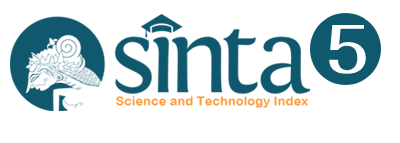Men and Women Language Features on Joe Biden’s and Kamala Harris’s Speeches
DOI:
https://doi.org/10.52187/rdt.v3i1.96Keywords:
language features, men, women, speechAbstract
This paper mainly investigates the use of male and female language features, especially in Joe Biden and Kamala Harris’s victory speeches. The use of these language features is seen from several aspects, including vocabulary, attitudes, syntax, as well as other aspects such as the choice of diction whose meaning is studied by semantics. This research includes qualitative research. The data was collected through transcripts of speeches downloaded from the internet. The results showed that every language feature possessed by gender will adapt to the context, condition, time, and form of communication, so it cannot be applied to all features in speech considering speech as a form of one-way communication.
Keywords: language features, men and woman, speech
References
Anggara Putra, B., & Prayudha, P. (2019). The Analysis of Women and Men Language Features on America’s Got Talent. Universitas Ahmad Dahlan.
Hernández-Campoy, J. M., & Schilling, N. (2012). The application of the quantitative paradigm to historical sociolinguistics: Problems with the generalizability principle. The Handbook of Historical Sociolinguistics, 63, 79.
Karjo, C. H., & Wijaya, S. (2020). The Language Features of Male and Female Beauty Influencers in Youtube Videos. English Review: Journal of English Education, 8(2), 203–210.
Lakoff, R., & Lakoff, R. T. (2004). Language and woman’s place: Text and commentaries (Vol. 3). Oxford University Press, USA.
Miles, M. B., Huberman, A. M., & Saldana, J. (2014). Qualitative data analysis: A methods sourcebook.
Oktapiani, T., Natsir, M., & Setyowati, R. (2017). Women’s language features found in female character’s utterances in the Devil Wears Prada movie. Ilmu Budaya: Jurnal Bahasa, Sastra, Seni Dan Budaya, 1(3), 220.
Priyadi, S. (2015). Features of Man and Woman Language Used by Two Main Characters in Winds of Evil Novel: Gender Prespective. Language Horizon, 3(1).
Robertson, K., & Davidson, J. (2013). Gender-role stereotypes in integrated social marketing communication: Influence on attitudes towards the ad. Australasian Marketing Journal, 21(3), 168–175.
Salihu, H. H. (2014). The sociolinguistics study of gender address patterns in the Hausa society. International Journal of Social Science and Humanity, 4(1), 48.
Wardhaugh, R. (2006). Sociolinguistics Fifith Edition. UK: Blackwell Publishing.

















